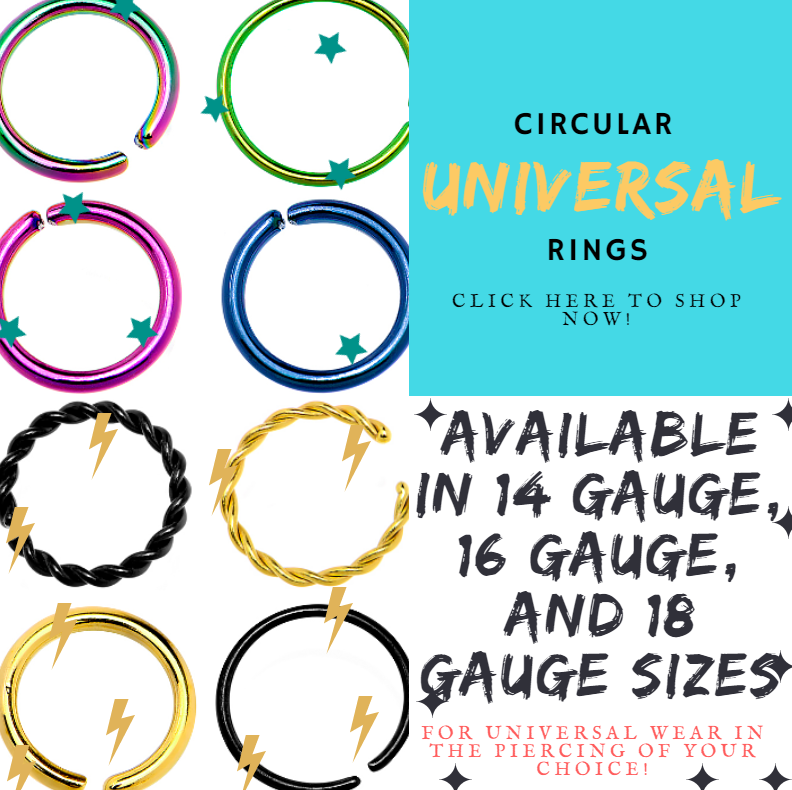
Location: higher up on the fleshy portion of the ear near where the helix begins
Jewelry: initially, a circular ring or barbell from 22 gauge (0.6mm) up to 14 gauge (1.6mm) is used in lengths/diameters typically ranging from 5/16″ (8mm) to 5/8″ (16mm); jewelry types used can include BCR, horseshoe circular barbell, straight barbell, labret stud, or nostril ring/stud
Healing: total healing time is anywhere from 4-8 weeks; can be longer (up to 9 months!) if your ear’s anatomy has cartilage present where your upper lobe piercing is placed
Aftercare: wash with warm water and antibacterial soap and always make sure your hands are clean; avoid smoking, using public telephones, and sleeping directly on your new piercing; resist the urge to change jewelry prematurely – it’s worth the wait to do it right!
Some people later opt to get a second or third hole above the first standard lobe piercing – and those ear piercings would be considered to be upper lobe or “high lobe” piercings, which are mostly performed as a compliment to the standard lobe piercing.
Welcome to the Body Piercing Encyclopedia!
This post is included in the Ear Piercing category of our encyclopedia and is joined by many other blog posts about the other piercings available as options in the ear and surrounding areas.
- Standard Ear Lobe Piercing
- Upper Ear Lobe Piercing
- Standard Helix Cartilage Piercing
- Forward Helix Cartilage Piercing
- Rook Cartilage Piercing
- Conch (Inner) Cartilage Piercing
- Flat (Scapha/Outer Conch) Cartilage Piercing
- Daith Cartilage Piercing
- Snug (Anti-Helix) Cartilage Piercing
- Industrial Barbell Cartilage Piercing
- Tragus Cartilage Piercing
- Anti-Tragus Cartilage Piercing
- Surface Tragus Piercing
DISCLAIMER: the styles and locations displayed in the reference image to the left won’t match perfectly with your ear’s shape because each and every person has an anatomy that is uniquely individual and some of the piercings featured in our encyclopedia may not be possible for you to get. To find out what piercings are available for you and your specific anatomy, the best option is to visit your local professional piercer and ask for their expertise in determining what piercings are options for you and your ear!






